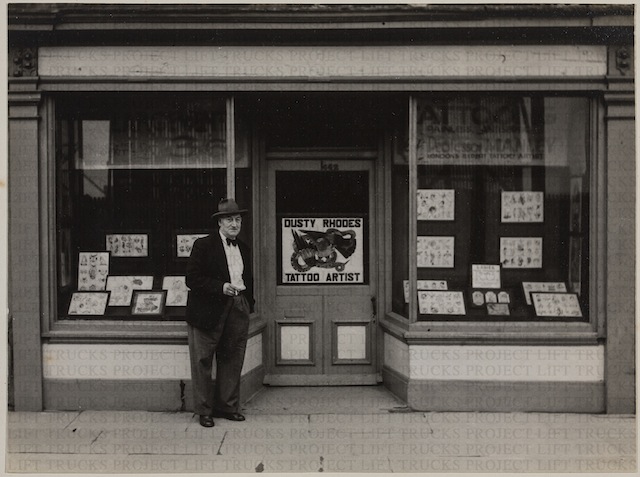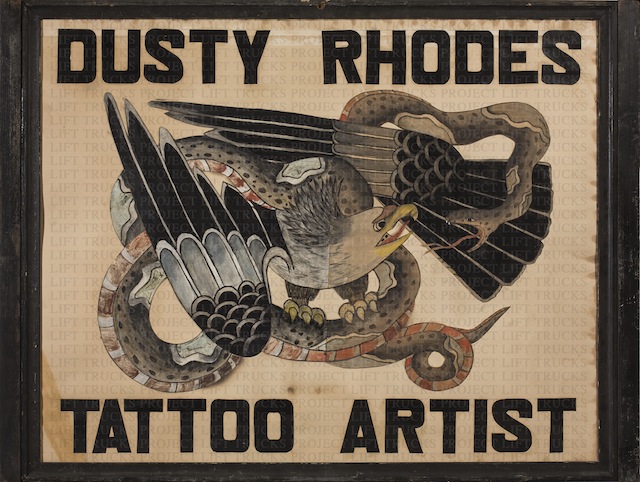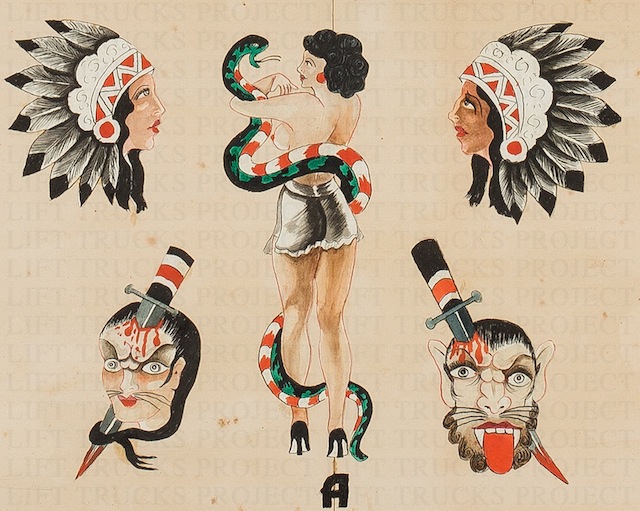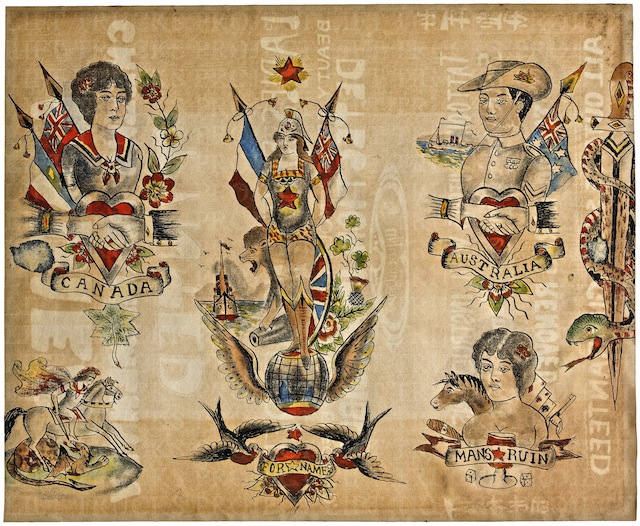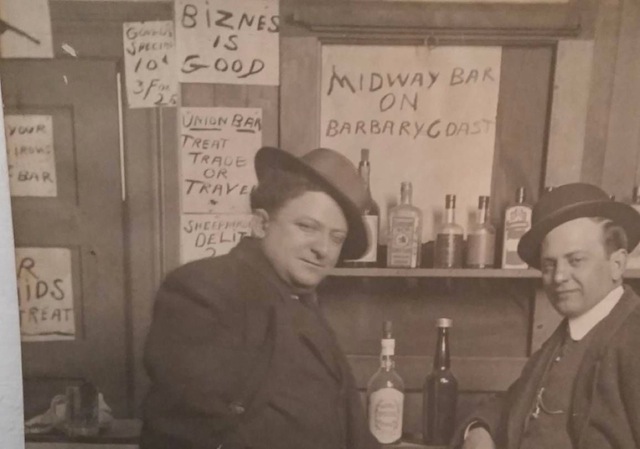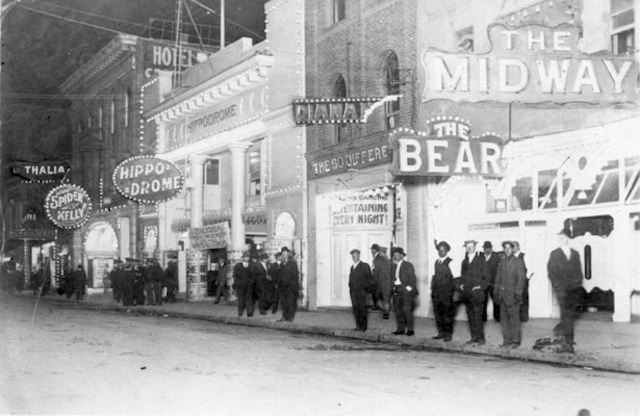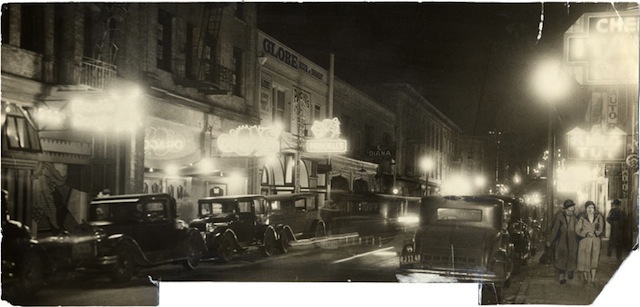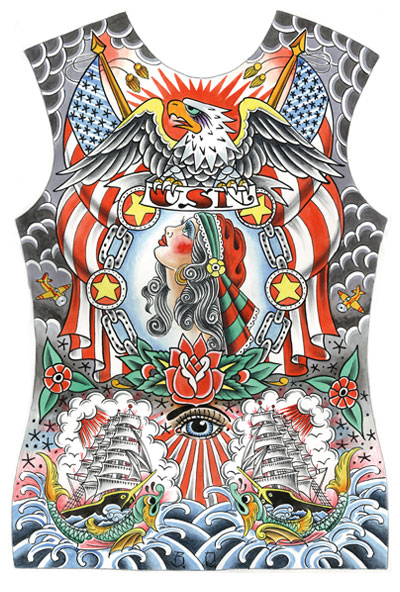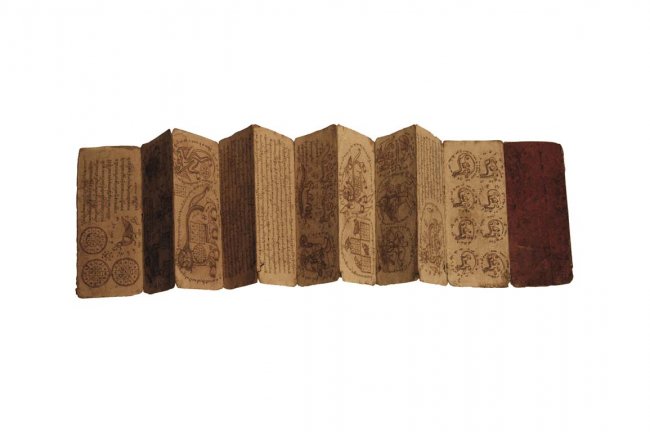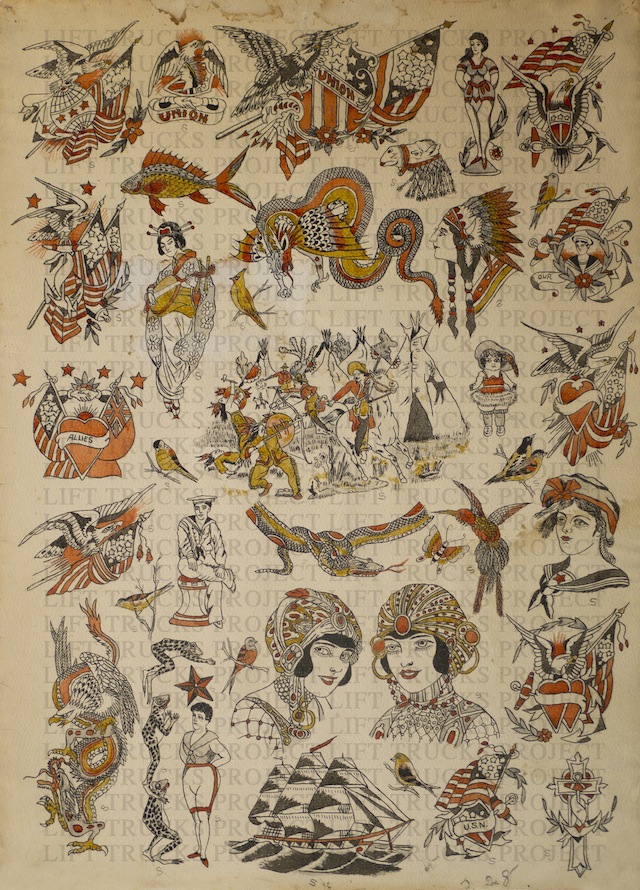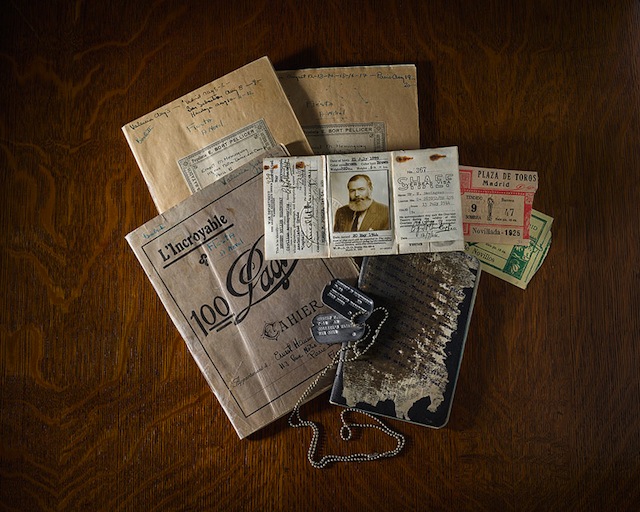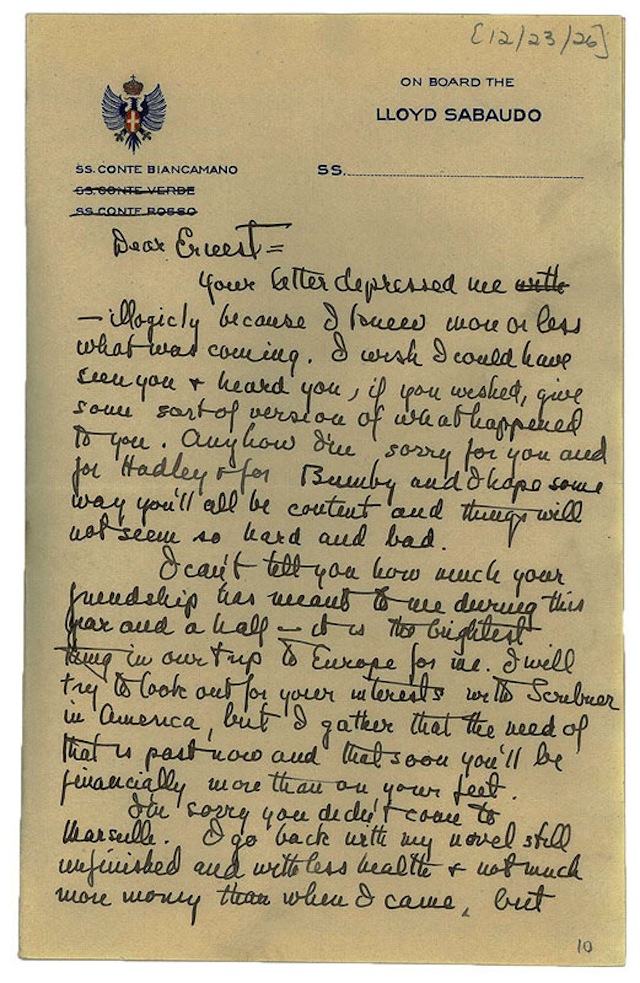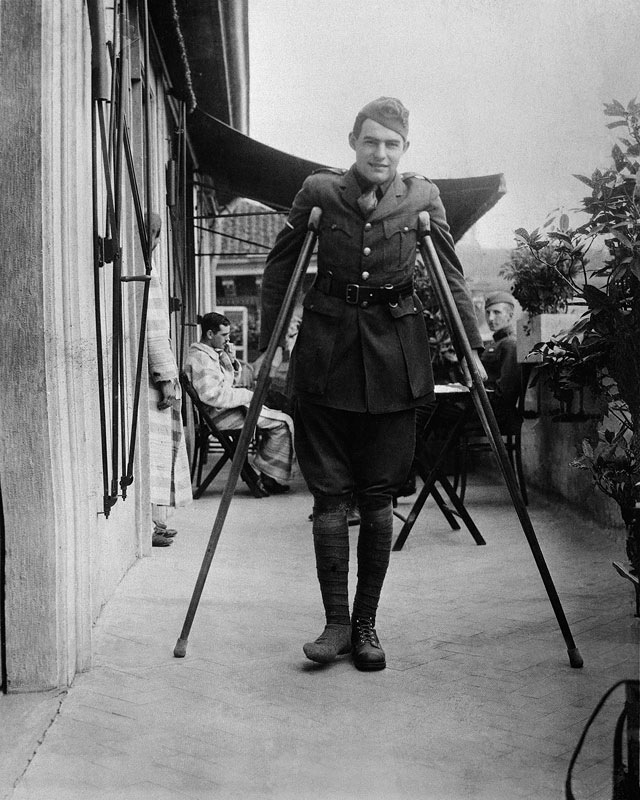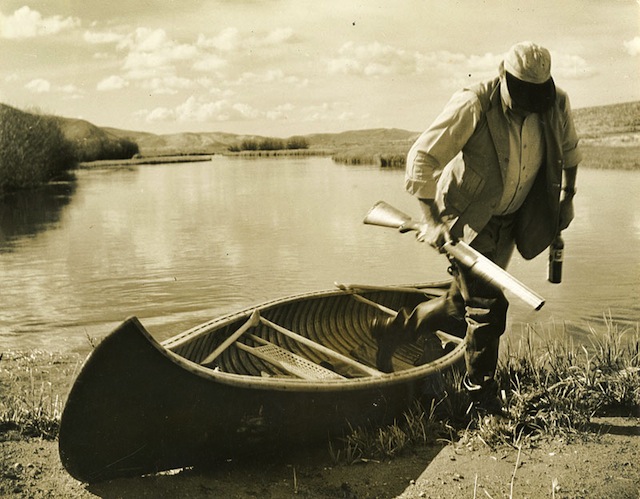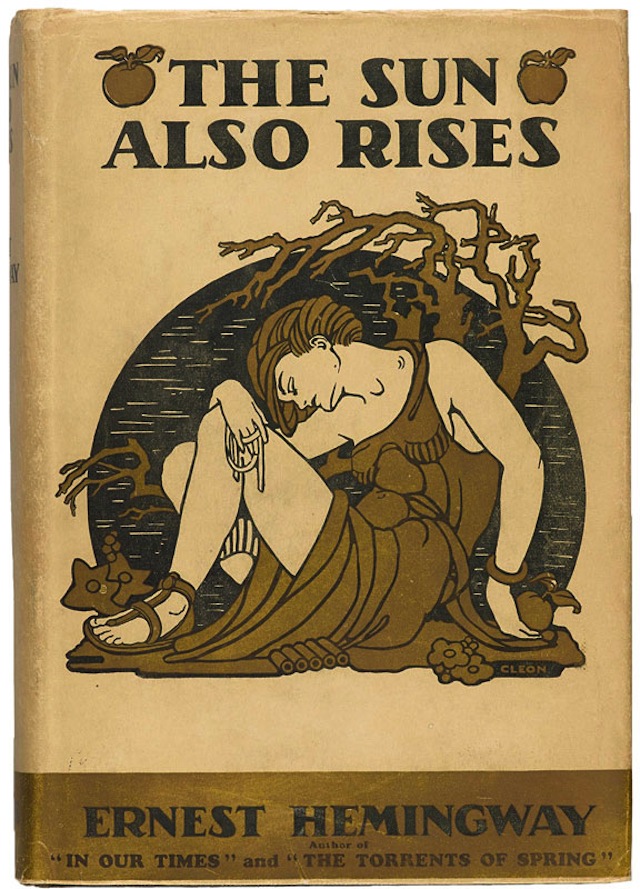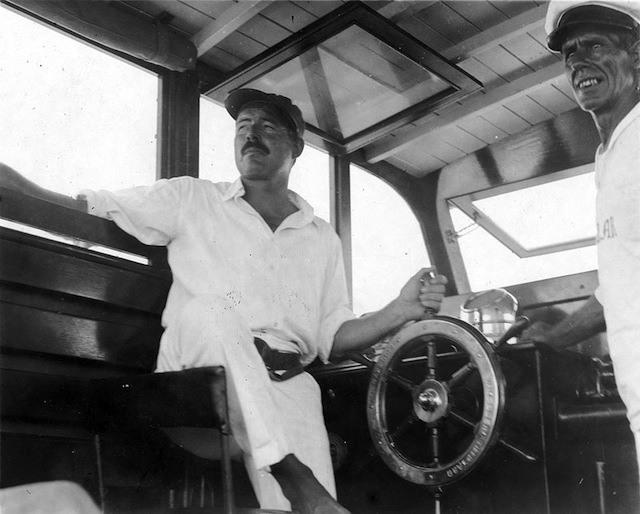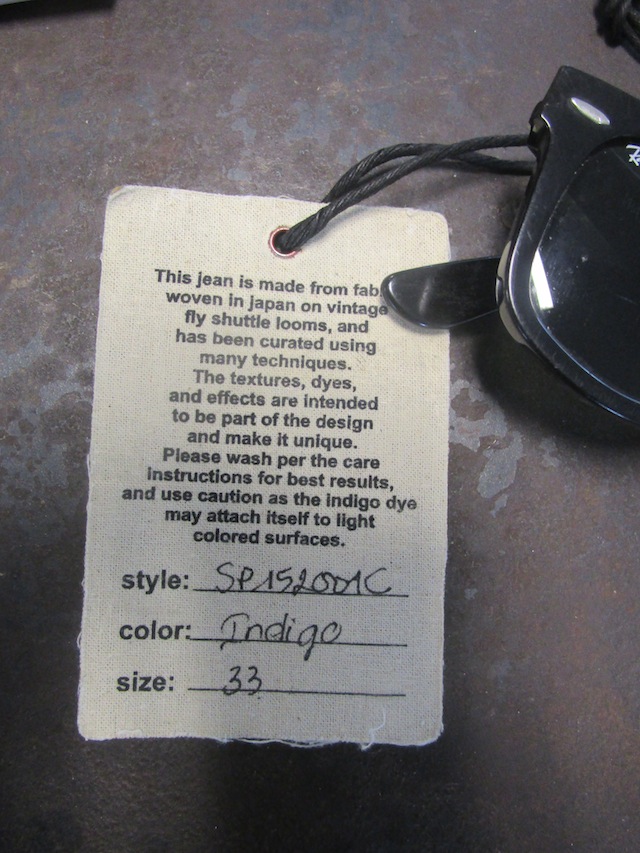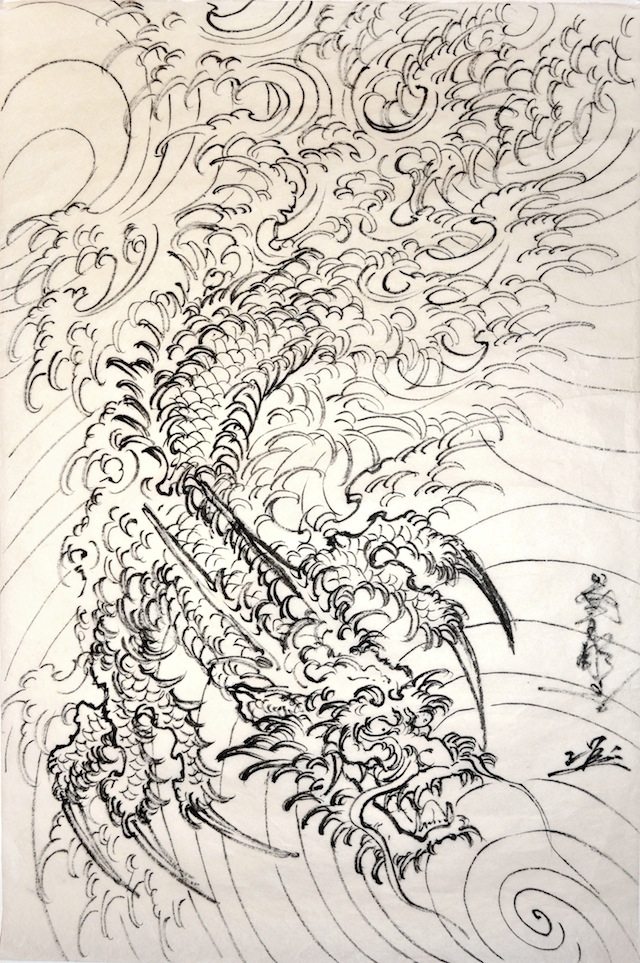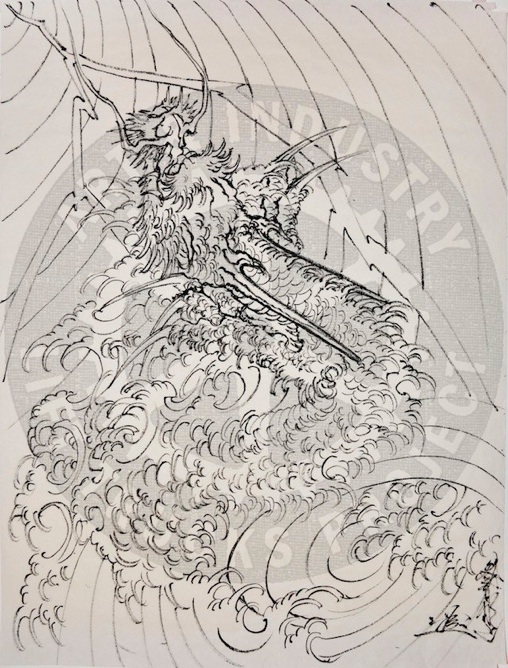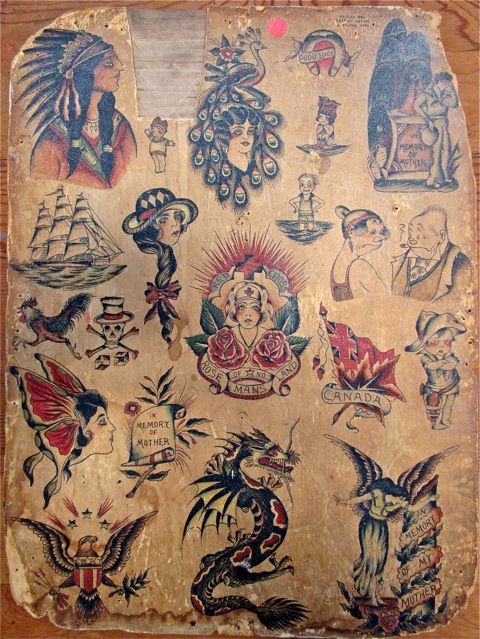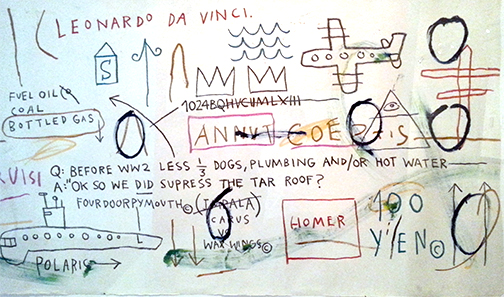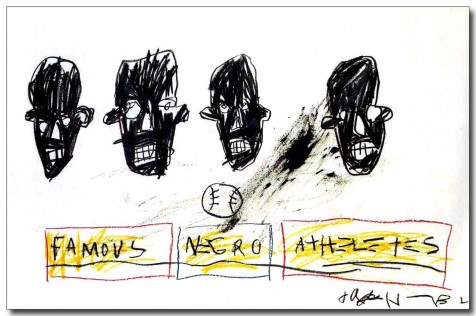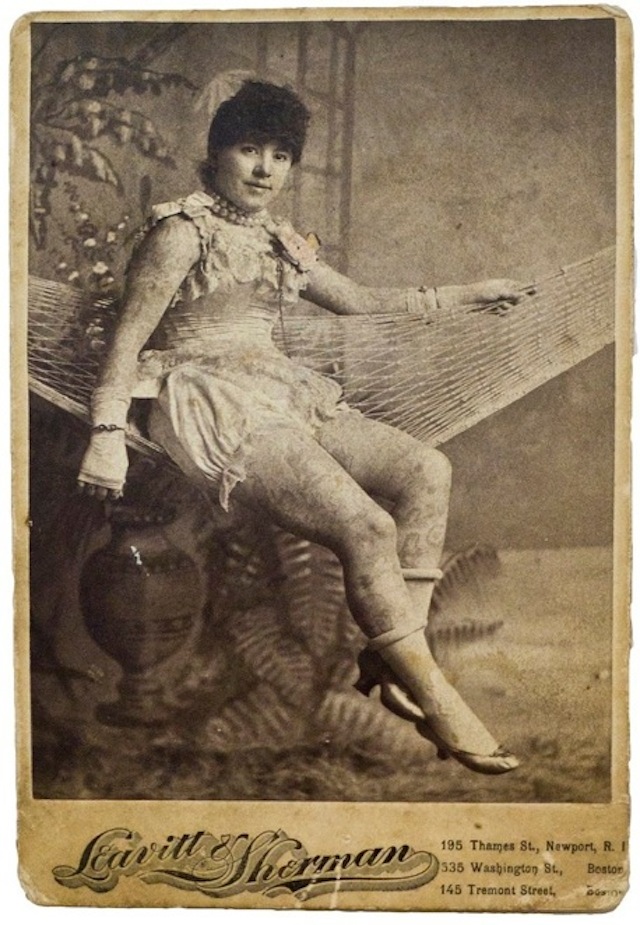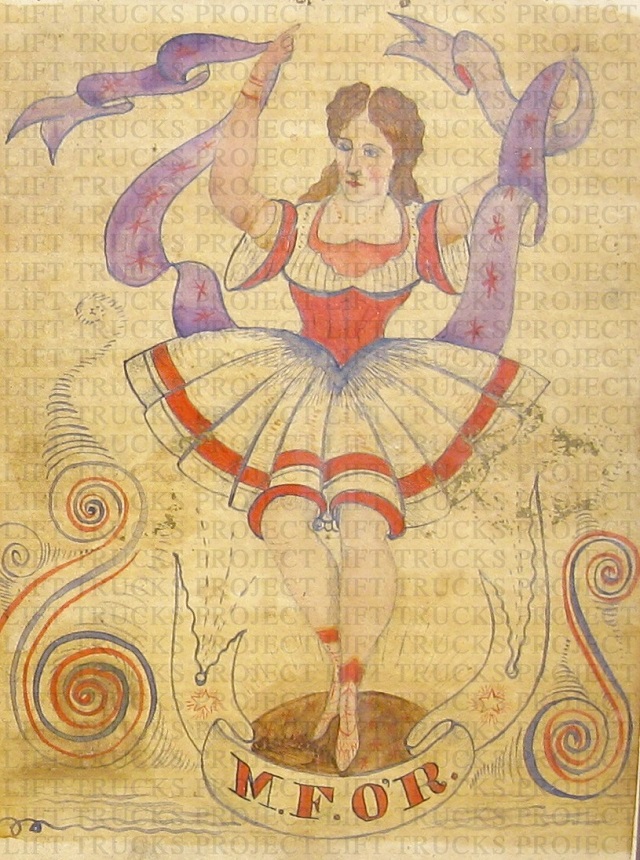From exhaustive comparison analysis at our very own institute for tattoo research, a division of LTP, we have determined the following... The large tattoo flash board from Dusty Rhodes studio is most certainly the artwork of Joseph Hartely. He was well known to have supplied the Rhodes brothers with supplies and flash samples for their shops.
Our research focused upon the lettering. As as unique as a handwriting analysis; no two people will letter exactly the same.

Compare the individual letters in the word "NAME". Note the outward curve on the right stroke of the "A" and the distinctive convex and concave lines on the "N". The way the center angle of the "M” does not descend as far as the other parts of the letter, however, is standard practice for English lettering.
Another tell, is to compare the word "LOVE" in known Hartleys and the long flash board. Note the fatter horizontal line on the "L" and the slimmer vertical stem.
Again in comparing published and documented Hartley sheets with the long sheet, It helps to look at the way snakes are painted, the distinct red/white underbelly and the and black and green pattern of the backs. Another signature of the artists work are the unique dots around hearts. All the women have stylized bright eyes, arched eyebrows, rosebud lips and heavy jaw lines... Ladies shoes, tiny.. these are the final tell. The art boards seem to be the same also.
We rest our case. We believe the evidence connects the artist to the artwork sure as a fingerprint on a newly cracked safe.

